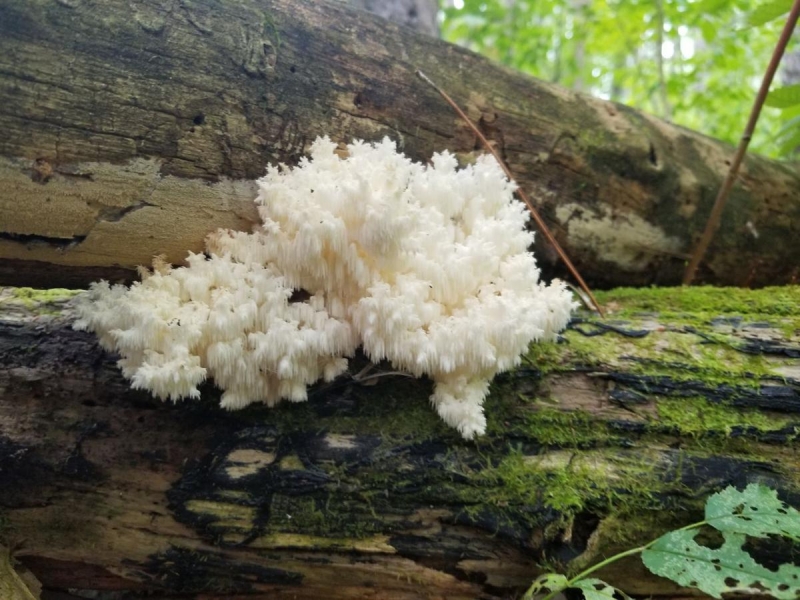
Summers go as fast as they come in Minnesota, leaving most of us short of getting to our favorite activities.
We want time at the lake, to see a baseball game or outdoor concert, to go to fairs or amusement parks, to visit farmer’s markets or flea markets, and to spend a night camping in the woods. We take vacations, have family reunions, and soak in the fabulous weather we wait for all year.
I mark late spring with turkey hunts and morel mushrooms, knowing all along that summer will begin at the peak of the longest day, and we’ll bask in her warm glory for two months of heat and sunshine while the days shrink.
The morel mushrooms get consumed in a hurry, but I tell myself there will be opportunities for other mushrooms as the summer wanes. Despite my awareness of the fungal bounty in the woods, this year I again let most of the summer slip by before going on the hunt for mushrooms.
Mushrooms are adapted to needing heat and moisture at specific times. There are a great many edible mushrooms available in Minnesota, with most of them fruiting throughout the summer and into the fall.
One of the most common finds is the giant puffball mushroom. This mushroom doesn’t have any poisonous lookalikes when harvested at large sizes. It’s big, pure white, and when fresh is soft.
You can slice off slabs of this mushroom and grill it, dredge in egg with batter and drop in hot oil to fry, or cut into thin slices and saute it. I’m fortunate to have giant puffballs growing in our family cabin’s lawn.
One of the most fascinating edible mushrooms is a case of parasitism. The lobster mushroom, Hypomyces lactifluorum, is a parasite that usually latches onto a host white russula mushroom.
The white russula on its own is a largely forgettable edible; just another small, white mushroom. When parasitized by H. lactifluorum, it grows into the shape of a triangulate lobster claw and turns bright orange or red.
The lobster mushroom is great grilled or added to soups and stews (lobster mushroom bisque anyone?). It’s hard to walk past lobster mushrooms when out foraging; their bright colors stand out at a distance.
Another brightly colored mushroom certain to catch your eye is the chicken of the woods. It is a shelf mushroom, meaning it grows in horizontal clusters on standing and downed hardwood trees.
Chicken of the woods is bright orange or yellow and has a soft texture. It’s important to find this mushroom when it s young and soft. Wait too long and it will harden or more likely fill with insects and worms.
It’s great cut into small pieces and added to stews. It truly does take on the taste and texture of poultry.
Chantrelles are worth a stroll in the woods from mid-summer into the fall. Chantrelles have a couple lookalikes, Jack-o-lanterns and false chantrelles, but the lookalikes grow on dead wood. Chantrelles will come up singly or scattered in hard and soft wood forests, sporting a mild yellow to yellow-orange color.
Chantrelles have an apricot aroma, with gill-like folds running down and onto the stalk. The cap is wavy and funnel shaped. They are very tasty sauted or added to soups or pasta dishes.
I recently tried a risotto recipe with chantrelles, white wine, chicken stock, and thyme that was fantastic.
When I can’t find morels in the spring, one of my consolation prizes are pheasantback mushrooms, also called dryad’s saddles. These are also shelf mushrooms, growing on live and dead hardwood trees.
The pheasantback has a mottled camouflage appearance like a hen pheasant’s back. If you find them early enough where you can cut or poke them with a fingernail and the pore layer isn’t too thick, they are great sautéd or chunked up in soups.
They smell like cucumbers and don’t have any poisonous lookalikes. You’ll find more in early summer, but after rains, these mushrooms can be found in August and September.
King Boletes, oyster mushrooms, hen of the woods, black trumpets, hedgehogs, coral mushrooms, and bear’s head mushrooms are a few more summer favorites.
For those new to mushroom foraging, buy a guide book with identifying characteristics and learn about mushroom anatomical structure so that you can positively identify what you’ve picked before you eat it. Or attend a foraging session with the Minnesota Mycological Society.
once back in the kitchen with your fresh finds, pick off any obvious dirt, insects, or foreign bodies, soak mushrooms in saltwater, rinse thoroughly, and pat dry.
A person can only eat so many, so plan ahead of a foraging trip so you can store your finds properly. Some mushrooms can be dried, many cannot. Some can be cooked and then frozen, in that order.
Summer will be over in a few short weeks, but the fun or foraging will continue through the early fall. Happy hunting, mushroom fans.
























